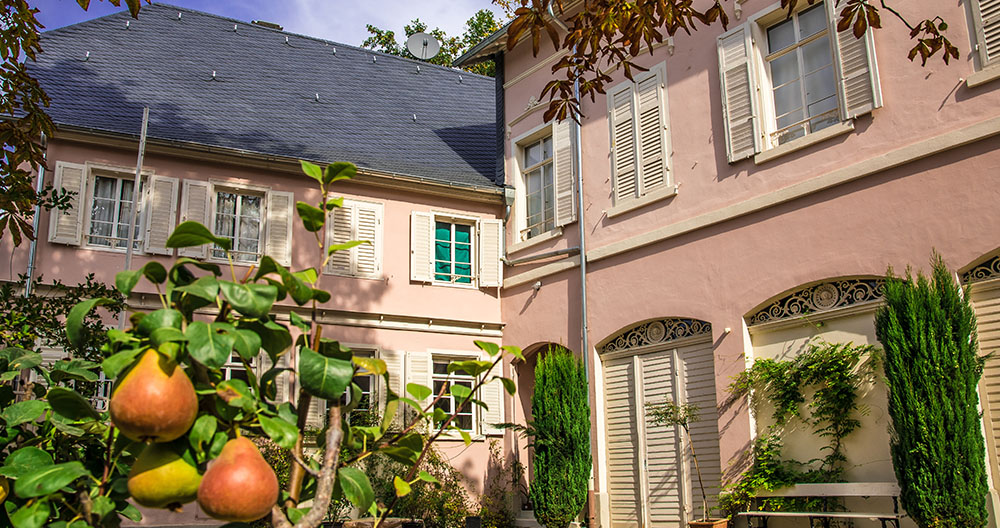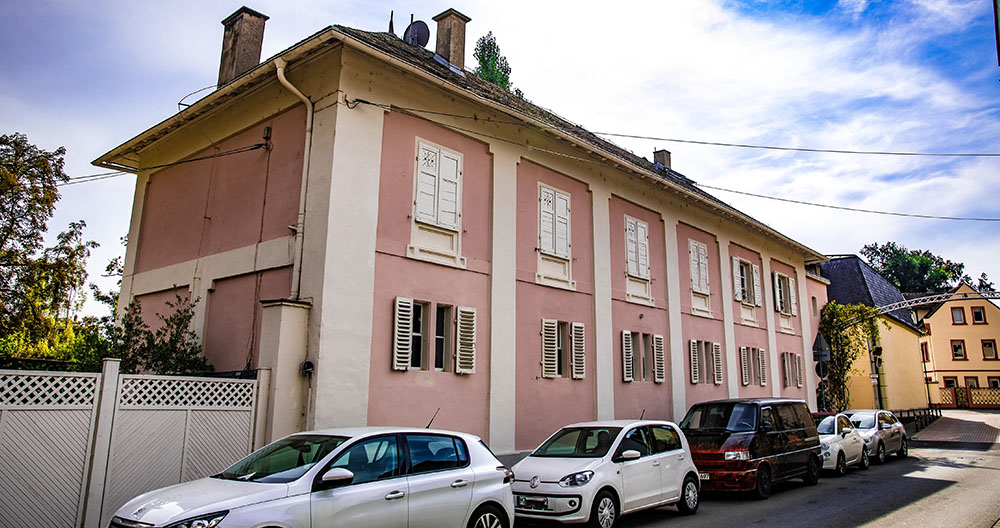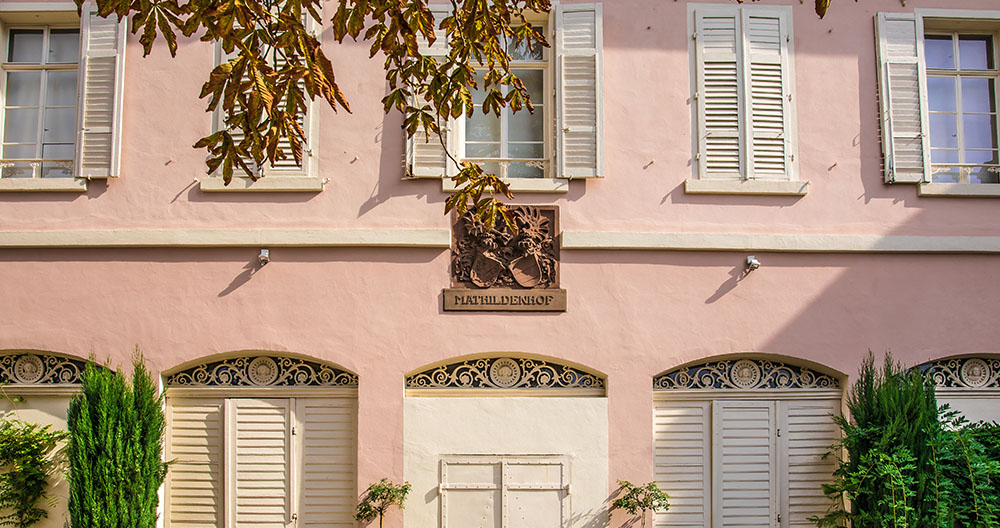



The Mathildenhof has had several noble owners in its 400 years of history.
It has been extended and rebuilt many times. The building on the left is the oldest part of the house. It dates from the 16th century. At that time the other houses surrounding the Mathildenhof today were not yet built, so this Court was outside of Nierstein in a an excellent setting. Maria Sophia Baroness von Harstall had the courtyard expanded later as a baroque three-wing complex. Unfortunately she bit off a bit more than she could chew, so that high house fell under the hammer in 1751. As you see, such things also happened to the nobility … But they rarely showed up here anyway, says Hans-Peter Hexemer from the Nierstein History Association:
One should rather imagine aristocratic life in such a way that at this point in time the aristocrats were not in Nierstein as often as their possessions give the impression. These were rather businesses branches to generate the income they lived on. Only occasionally the aristocrats were in Nierstein themselves. […] But that changed in the 19th century, when it was very hip for the new bourgeois owners to buy such residences.
The Mathildenhof was one of them: The Lauteren family had become rich in the wine trade and the emerging railroad industry. They bought the court and had it converted in 1862 into its current form in Italian style. The tower behind the house probably served as a lookout on the Rhine and the train station. Christian Lauteren was satisfied …
… and of course he was clever enough to say: We have the viticulture here. We have the railroad. Now let’s promote that people come to Nierstein by train on weekends and drink the nice wines here.
That is still today a good idea – 150 years later. Today the court is a listed building – including the park behind the house, which was designed by the notable garden architect Heinrich Siesmayer, who was also the creator of the Frankfurt Palm Garden.
Our next stop is the former Sophienkirche, the map below on the website shows you how to get there. On the way you will also pass the Haxthäuser Hof – one of the most important noble courts in Nierstein, which is a stop on our other Nierstein tour “Around the market square”. Of course you are also welcome to listen to the audio of at Haxthäuser Hof stop. But then please remember not to follow tour1 as described by the map on the Haxthäuser Hof website. To continue our tour – tour 2 – just turn right after the Haxthäuser Hof and go down the Rheinstrasse to number 36. You’ll get a reminder there, too.





The Mathildenhof has had several noble owners in its 400 years of history.
It has been extended and rebuilt many times. The building on the left is the oldest part of the house. It dates from the 16th century. At that time the other houses surrounding the Mathildenhof today were not yet built, so this Court was outside of Nierstein in a an excellent setting. Maria Sophia Baroness von Harstall had the courtyard expanded later as a baroque three-wing complex. Unfortunately she bit off a bit more than she could chew, so that high house fell under the hammer in 1751. As you see, such things also happened to the nobility … But they rarely showed up here anyway, says Hans-Peter Hexemer from the Nierstein History Association:
One should rather imagine aristocratic life in such a way that at this point in time the aristocrats were not in Nierstein as often as their possessions give the impression. These were rather businesses branches to generate the income they lived on. Only occasionally the aristocrats were in Nierstein themselves. […] But that changed in the 19th century, when it was very hip for the new bourgeois owners to buy such residences.
The Mathildenhof was one of them: The Lauteren family had become rich in the wine trade and the emerging railroad industry. They bought the court and had it converted in 1862 into its current form in Italian style. The tower behind the house probably served as a lookout on the Rhine and the train station. Christian Lauteren was satisfied …
… and of course he was clever enough to say: We have the viticulture here. We have the railroad. Now let’s promote that people come to Nierstein by train on weekends and drink the nice wines here.
That is still today a good idea – 150 years later. Today the court is a listed building – including the park behind the house, which was designed by the notable garden architect Heinrich Siesmayer, who was also the creator of the Frankfurt Palm Garden.
Our next stop is the former Sophienkirche, the map below on the website shows you how to get there. On the way you will also pass the Haxthäuser Hof – one of the most important noble courts in Nierstein, which is a stop on our other Nierstein tour “Around the market square”. Of course you are also welcome to listen to the audio of at Haxthäuser Hof stop. But then please remember not to follow tour1 as described by the map on the Haxthäuser Hof website. To continue our tour – tour 2 – just turn right after the Haxthäuser Hof and go down the Rheinstrasse to number 36. You’ll get a reminder there, too.


